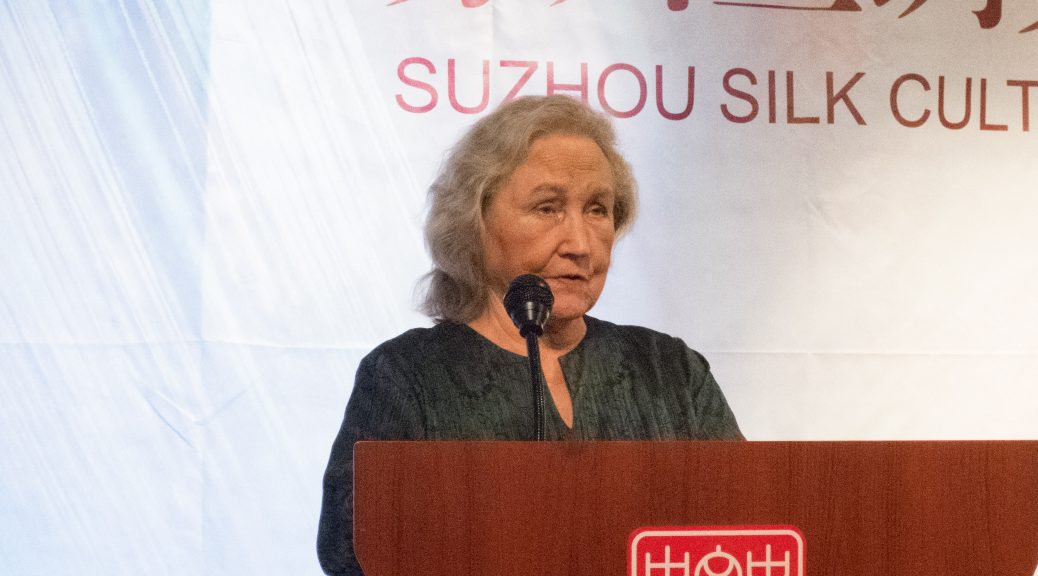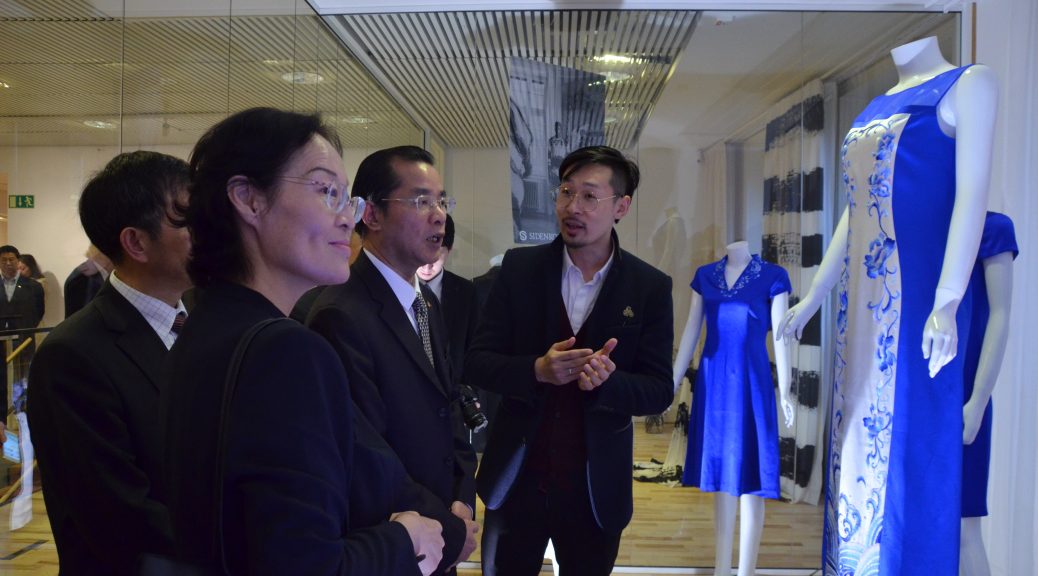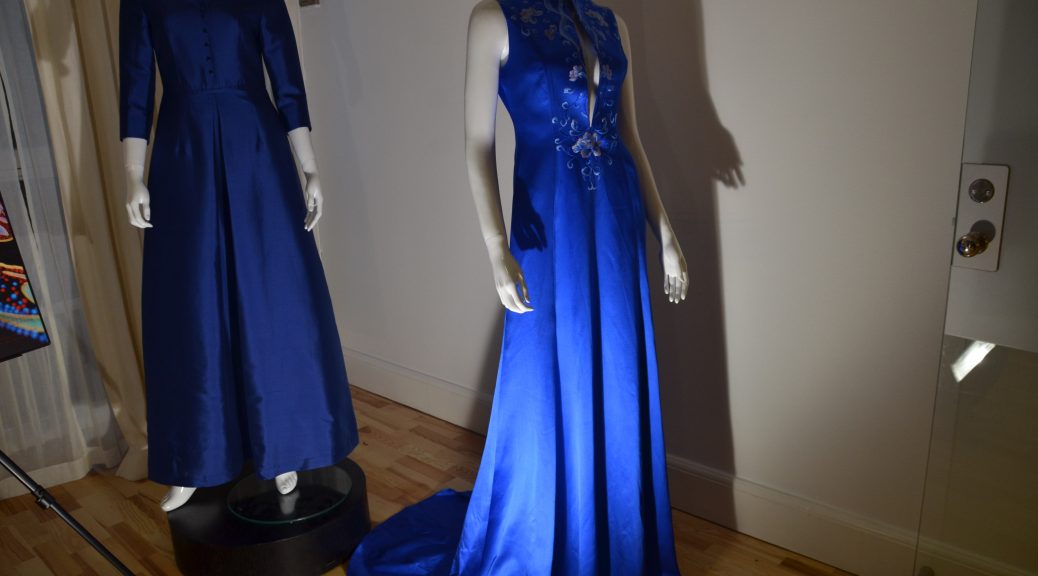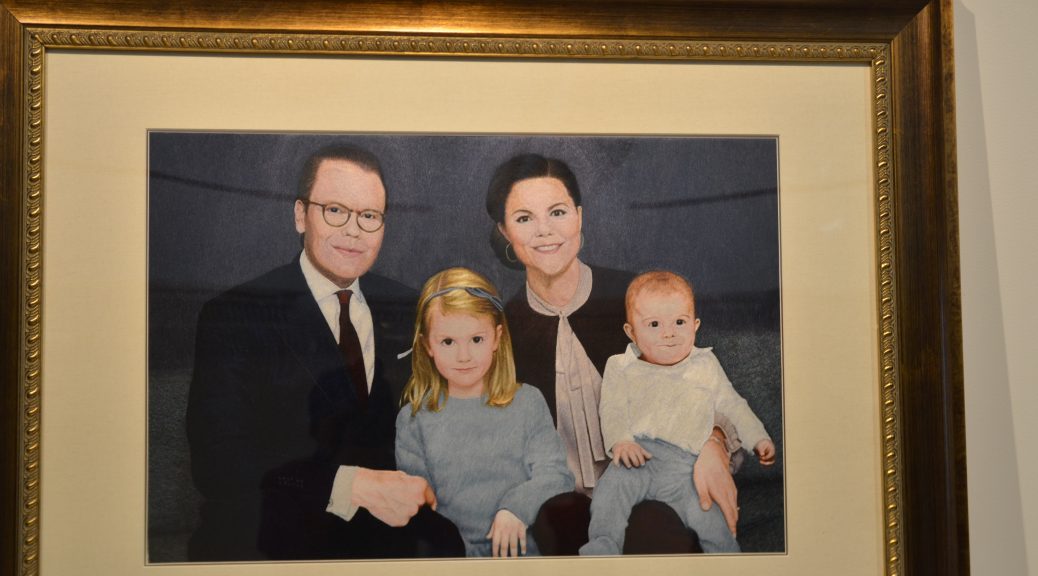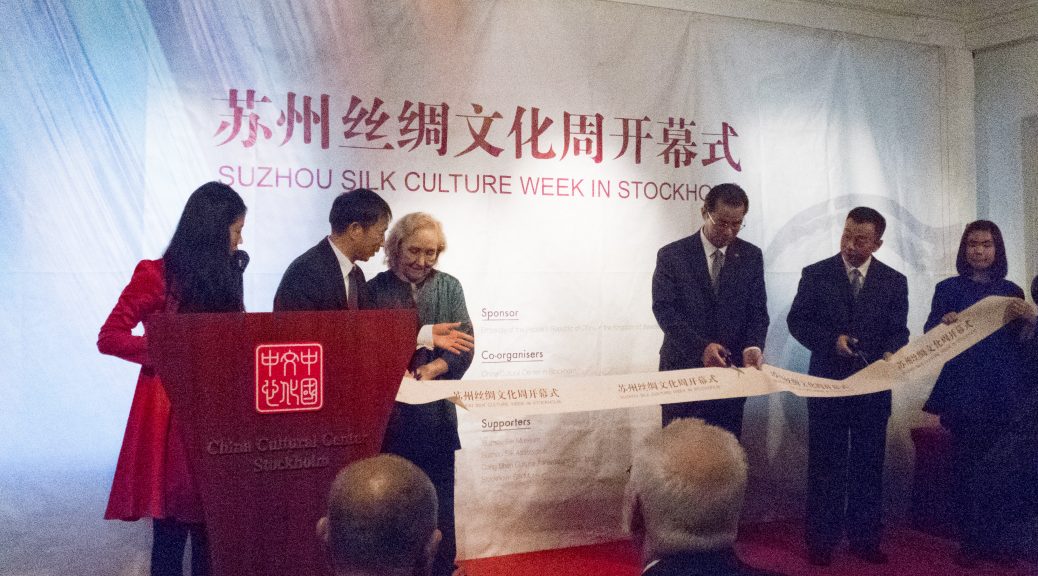林西莉到中国留学两年,写了三本书,《汉字王国》,《琴》和《另一个世界》其中前两本获得瑞典最高文学奖奥古斯特奖,一本在中国获得前20名中名列前茅的文学奖。请听本网记者陈雪霏对林西莉的专访。
Daily Archives: 10/16/2017
视频:斯德哥尔摩苏州丝绸文化周开幕式实况
视频:苏州缂丝艺术家陆美英在斯德哥尔摩苏州丝绸文化周讲述缂丝的艺术
北欧绿色邮报网记者陈雪霏16日在斯德哥尔摩中国文化中心正在此间进行的苏州丝绸中国文化周期间专访了苏州缂丝艺术家陆美英。陆美英表示缂丝(kesi)技术存在上千年了。其作品《五子登科》惟妙惟肖,金色的丝绸是双面一样的,可以水洗,晾晒,还能存在一千多年,可见,这是多么宝贵啊!此次展出,她特意把自己的缂丝机带来了。
在这种机器上缂丝仿佛是过去的织布机,但是,不同的是,这个活儿真是绝活儿!
陈雪霏录制。
视频:苏州刺绣艺术家徐祥云在斯德哥尔摩接受北欧绿色邮报网专访
北欧绿色邮报网记者陈雪霏16日在斯德哥尔摩中国文化中心正在进行的苏州丝绸文化周期间,专访了苏州刺绣艺术家徐祥云。记者了解到,她和七八个同事用了10个多月的时间用一根头发丝分成64份那么细的真丝线绣了瑞典王储维多利亚一家四口,惟妙惟肖,眉目传神,为中瑞之间的文化交流做出贡献。
Xu Xiangyun, 55, has done the silk embroidery for 50 years. This work of Swedish Princess and her family took Xu Xiangyun and seven others about 10 months to complete. She explained that she used silk which is as thin as being equivalent to one 64th of a piece of hair, thus the eyes are very vivid and lively.
徐祥云进一步演示她是如何将一根丝线分成64份的,真是精益求精。
陈雪霏录制。2017/10/16
Video: Suzhou Silk Cultural Week welcomed in Stockholm
Suzhou Silk Cultural Week welcomed in Stockholm. Greenpost Chen Xuefei interview Mia from Silk Company in Sweden. Filmed by Jan Peter Axelsson. 2017-10-15
查尔姆斯大学发现抗生素抵抗基因
北欧绿色邮报网报道(记者陈雪霏)– 瑞典查尔姆斯大学发现抗生素抵抗基因。
New antibiotic resistance genes found in research at Chalmers University of Technology
By Xuefei Chen Axelsson
STOCKHOLM, Oct. 16(Greenpost) — Researchers at Chalmers University of Technology and the University of Gothenburg, Sweden, have found several previously unknown genes that make bacteria resistant to last-resort antibiotics. The genes were found by searching large volumes of bacterial DNA and the results are published in the scientific journal Microbiome.
The increasing number of infections caused by antibiotic-resistant bacteria is a rapidly growing global problem. Disease-causing bacteria become resistant through mutations of their own DNA or by acquiring resistance genes from other, often harmless, bacteria.
By analysing large volumes of DNA data, the researchers found 76 new types of resistance genes. Several of these genes can provide bacteria with the ability to degrade carbapenems, our most powerful class of antibiotics used to treat multi-resistant bacteria.
“Our study shows that there are lots of unknown resistance genes. Knowledge about these genes makes it possible to more effectively find and hopefully tackle new forms of multi-resistant bacteria”, says Erik Kristiansson, Professor in biostatistics at Chalmers University of Technology and principal investigator of the study.
“The more we know about how bacteria can defend themselves against antibiotics, the better are our odds for developing effective, new drugs”, explains co-author Joakim Larsson, Professor in environmental pharmacology and Director of the Centre for Antibiotic Resistance Research at the University of Gothenburg.
The researchers identified the novel genes by analysing DNA sequences from bacteria collected from humans and various environments from all over the world.
“Resistance genes are often very rare, and a lot of DNA data needs to be examined before a new gene can be found”, Kristiansson says.
Identifying a resistance gene is also challenging if it has not previously been encountered. The research group solved this by developing new computational methods to find patterns in DNA that are associated with antibiotic resistance. By testing the genes they identified in the laboratory, they could then prove that their predictions were correct.
“Our methods are very efficient and can search for the specific patterns of novel resistance genes in large volumes of DNA sequence data,” says Fanny Berglund, a PhD student in the research group.
The next step for the research groups is to search for genes that provide resistance to other forms of antibiotics.
“The novel genes we discovered are only the tip of the iceberg. There are still many unidentified antibiotic resistance genes that could become major global health problems in the future,” Kristiansson says.

|
